How to Remove Years of Kitchen Cabinet Grit and Grime
When did you last look at your kitchen cabinets? Not a passing glance, but an up-close visual study—paying particular attention to the areas around the knobs and handles that get touched thousands of times throughout the weeks and months? Yeah, that’s what I’m talking about and what I’m pretty sure my reader Sandy is talking about, too.
Dear Mary: We’re moving into a new (to us) house and would like to know what kind of cleaner to use on the wood kitchen cabinets? They’re pretty skanky and feel sticky to the touch!
I hate to think how many years of dirt have built up on them. But I don’t want to remove any finish that is on them. How can we clean the years of dirt without damanging the finish? Sandy
Dear Sandy: It sounds to me as if your challenge is greater than simple maintenance of kitchen cabinets to keep ahead of sticky build-up, the result of cooking. Anyone who has a kitchen and actually cooks in it knows this just happens!
Your situation may call for a good commercial product for the simple reason that you don’t know how old this dirt is, or what kind of finish is hiding beneath it. It’s quite possible the cabinets are in great shape and can be restored to their original beauty. You really can remove years of grit and grime from any wood surface. And you have options—use a commercial product or make your own wood cabinet cleaner.
Natural Orange Oil
Should you prefer a commercial product, you won’t find anything more effective than Howard Real Orange Oil products. You can depend on the effectiveness of real orange oil polish to melt away grease, grime, polish, and wax buildup, leaving a fresh scent and beauty in its place. It’s going to cost a bit to do your entire kitchen, should you decide to go the commercial route.
Your other option is to make your own highly effective cleaner, for just pennies.
I have two recipes for you and any readers with wood cabinets, regardless if those cabinets have a natural finish or are painted.
The first is for cabinets that just need some sprucing up to bring back the beauty and shine; the second is more powerful if you’re looking at years of built-up gunk and grime.
General Wood Cabinet Cleaner
In a spray bottle (these 16-oz. bottles are perfect for homemade cleaners) mix:
- 2 tablespoons olive oil
- 4 tablespoons white vinegar
- 8 drops Blue Dawn
- Warm water to fill the bottle (about 2 cups)
Shake to mix then spray on one door or drawer front at a time. Scrub with a soft cloth to remove any dirt, then buff to a beautiful shine. Before each spray, give the bottle a shake to keep the oil mixed in.
Pro Tip
While I have cautioned readers in the past to avoid using white vinegar on hardwood floors regularly and routinely because over time the acid in the vinegar is going to permanently dull the finish. Using vinegar in the recipe above is not going to create a problem. First, because you are using oil along with the vinegar to protect and retain the finish, and secondly because this is a cleaner you would use only occasionally, not routinely in the way you would clean hardwood floors.
Heavy-Duty Wood Cabinet Cleaner
In a small bowl, measure out:
- 1 part* vegetable oil
- 2 parts baking soda
Using your fingers, mix this into a thick paste. Smoosh this a little bit at a time into the surface of that grimy cabinet, being particularly mindful of the areas close to the handles that receive so much handling and human contact.
Scrub with a soft cloth, sponge, or your fingertips to get this paste into the grain. Use an old toothbrush to get it into all of the nooks and crannies. This paste is very thick, and as you begin to scrub and brush, it will fall off, along with a lot of grime.
Save yourself a mess by placing an old towel beneath the areas you are cleaning to catch it as it falls off. It could get disgusting and that’s what you want because that signals that you are getting rid of the gunk and grime. Buff well with a soft cloth then step back to admire your beautiful work.
You can always add a few drops of essential oil to your homemade cleaners—orange or lemon would be a great choice, and that will leave a wonderful clean scent.
*Measuring in “parts” example: 1 tablespoon vegetable oil and 2 tablespoons baking soda. Or 2 tablespoons oil and 4 tablespoons baking soda—or 1 cup oil to 2 cups baking soda depending on the size of your job.
First published in Everyday Cheapskate: 5-29-20; Updated 1-3-22.
Everyday Cheapskate participates in the Amazon Services LLC Associates Program, an affiliate advertising program designed to provide a means for us to earn from qualifying purchases, at no cost to you.
More from Everyday Cheapskate
Please keep your comments positive, encouraging, helpful, brief,
and on-topic in keeping with EC Commenting Guidelines
Last update on 2024-04-25 / Affiliate links / Images from Amazon Product Advertising API

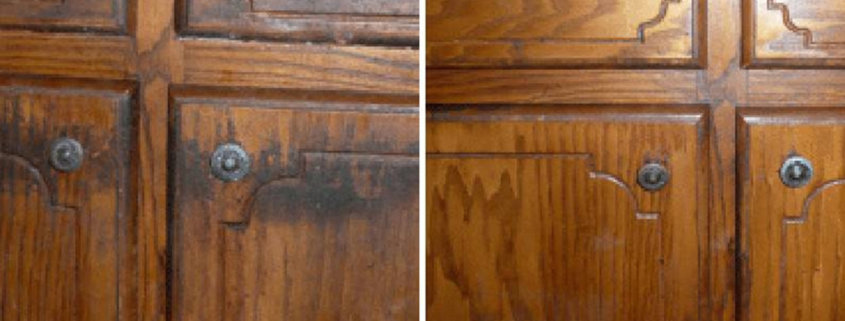




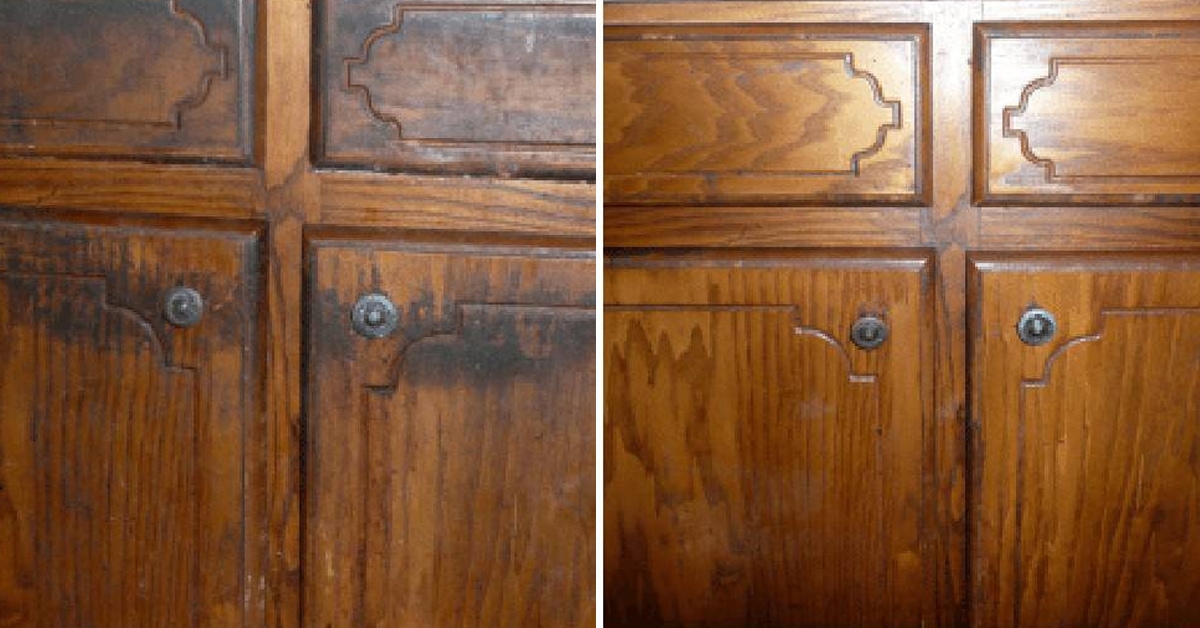



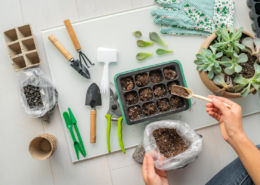
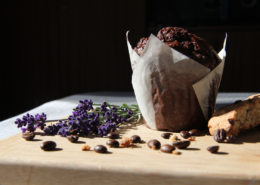


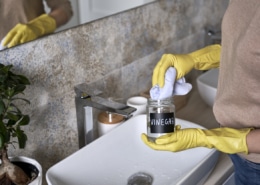
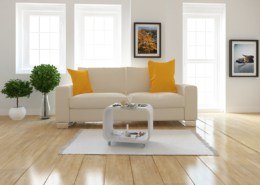
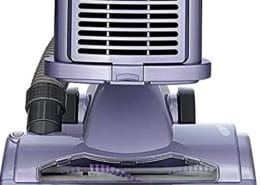
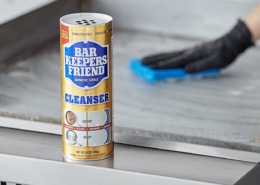
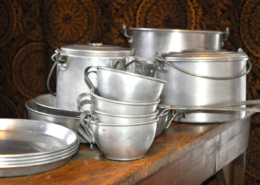
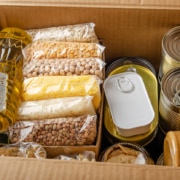
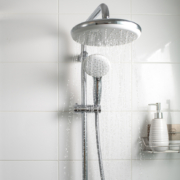


Hi Mary,
Just a heads up on your suggestions to use a toothbrush when using the vegetable oil and baking soda recipe. Please don’t do that! I just tried it on a pine table that had a lot of gunk and grease on it and now the toothbrush has left streaks that I can’t get out! I’ve tried going over it without the brush, to no avail.
Sorry if I sound too critical. Just to let you know…
love,
Maria
Reminder: Always test in an inconspicuous place when trying a new technique or product!
I just moved to a condo built in 70s in sf bay area that has a stomach turning rotten perfume odor in kitchen (like rotten baby powder).
The kitchen looks clean and i can’t find the source. I’ve cleaned all surfaces inside and out with 5 different potions to no avail: 1. diluted bleach. 2. eucalyptus oil, 3. orange oil. 4. White vinegar. 5. Burned white sage. 6. Hot water & eucalyptus oil sprayed in every nook and cranny with high pressure sprayer pump bottle. I left the house for 30 minutes & the perfume odor was worse upon return which means i DID touch the surface somewhere.
Next I’ll try scrubbing each surface with Murphy’s orange wood cleaner although I’d prefer a lemon scent… Which one?
I cleaned the floors, pulled out the refrigerator to check floor and walls, cleaned under sink, under all counters, cleaned every cabinet inside and out on every surface, under stove fan. I can’t figure it out.
Hopefully soon. It’s making me sick.
Sounds like you need Nok-Out!
what about the garbage disposal?
How about the drip tray under the refrigerator? That can be a real stinker.
Could it be in the drywall in the ceiling or walls? You might want to repaint both
Could it be the glass light fixture covers heating up and releasing old cooking oil and leftover incense residue smell? Pop them in the top rack of the dishwasher and run (with a detergent pod) on your hottest cycle. This is how we got rid of rancid curry smell in our house on move in.
I have an Amish wood table that needs to be clean. Tried wood and seems to make a greasy dull residue even though I wipe off excess after about 10-20 minutes. Help
I suggest you think of it as a wood cabinet (see the post above) and try those methods! It’s possible that your table has a buildup of wax, soap, oil, food, dirt and grime from many hands touching it. If it is in the kitchen it could have a buildup of splatters, too.
Hi Mary,
For the heavy duty wood cabinet cleaner recipe, should one use a drying oil like linseed instead of the vegetable oil (which can collect dust and go rancid as stated) in the amount of one part oil to two parts baking soda? Thanks so much!
Yes you can use linseed oil.
Which product will work on a really old wooden front door which was painted with oil about 30 years ago? The paint looks dried-out (it’s black, but almost looks gray). Would like to avoid stripping and re-painting. Thank you!
Please explain what is a drying oil…..thank you…
A drying oil is an oil that hardens to a tough, solid film after a period of exposure to air, at room temperature. The oil hardens through a chemical reaction in which the components crosslink (and hence, polymerize) by the action of oxygen (not through the evaporation of water or other solvents). Linseed is a drying oil and is the most widely-used oil in the paint and varnish industry.
My cabinets were bad, b REALLY bad. Don’t judge. I’m disabled and can only work on stuff as I feel up to it. Anyway, I went straight for the second option of oil and baking soda… which did NOTHING! I was SO disappointed, UNTIL I wiped everything down with seriously hot water, added a bit more baking soda and a few drops of Dawn liquid to the mix. It started working!!! So then I did two cabinet fronts, the WORST ones that open onto the garbage and recycle bins, using a bit (not much) water then the scrub, rinse and repeat. I’m SO THRILLED!! I only managed to get those two done today, but now I know the trick! I will be tackling more as I’m able!
Brenda, I too am disabled ( not noticeable tho ) That mixture is also great for cleaning flat top stove tops!!! I never thought to use the paste on my nasty dark wood cupboard doors tho!!! My whole upper body / muscles, tendons etc. are mush so I definitely not up to scrubbing real hard. I’m wondering if after the paste is wiped off real good if it’s a good idea to treat the wood with a light coat of Old English?
You may want to use a drying oil [like linseed, the most common drying oil-mh] in place of olive or vegetable oil, which will collect dust and eventually go rancid.
Hi there Mary, thank you for your insightful guide on how to remove grit and grime. Keep it mind that this doesn’t just apply to your kitchen cabinet, but to all your old wooden furniture as well!